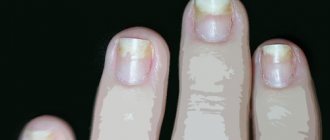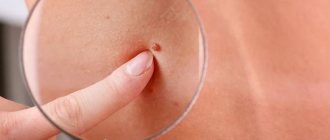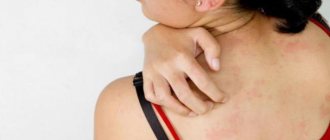The eyes itch and itch in a variety of ophthalmopathologies. Moreover, this symptom sometimes signals a systemic disease. In some cases, itching in the eyes is not dangerous when it is caused by exposure to external factors on the mucous membrane or cornea. Let's find out what causes itching in the eyes, the causes and methods of treating the disease.
Many ophthalmological diseases of a bacterial, infectious, inflammatory nature are accompanied by a symptom such as itching in the eyes. Sometimes it causes mechanical injury to the eyeball, contact with dust, cosmetics and other foreign bodies on the cornea or mucous membrane. Eyes can itch due to various systemic pathologies. Thus, there are three groups of reasons that are the culprits of this common symptom. Let's look at them in more detail and find out the signs of various eye pathologies that cause itchy eyes. This will make it easier to distinguish one disease from another and understand the cause of its occurrence.
Itching in the eyes: non-pathological causes
First, it’s worth listing factors that have nothing to do with diseases. They are usually associated with the external environment. These exogenous causes of itchy eyes include:
- wearing optics, spectacles and contacts, which are not selected correctly or are used in the wrong mode;
- contact with particles of dirt, dust, chemical compounds, and tobacco smoke on the outer surface of the eye;
- prolonged work at a computer monitor without breaks;
- prolonged stay in rooms where there is a lot of dust or the air is too dry;
- chronic lack of sleep;
- exposure of the eyes to a bright light source.
In order to eliminate itching in the eyes, it is necessary to protect them from the main irritant. In other words, it is necessary to work in ventilated areas; glasses and contact lenses should be selected only with an ophthalmologist, and not independently. While working at the computer, take breaks and do eye exercises to help relax your eye muscles. If a foreign body gets on the surface of the eyeball and does not injure the upper epithelial tissues, you just need to remove it from the eye with a handkerchief and water. All of the above reasons of an endogenous nature often do not lead to the development of diseases. Of course, if you wear incorrectly fitted glasses for a long time, your vision will most likely deteriorate even more. However, a single exposure to all these factors on the eyes does not pose a serious danger.
Prevention
- Regular hand washing. Many people have a habit of rubbing their eyes, so it is better to eliminate the risk of infection on the surface of the cornea in advance.
- Wearing sunglasses in sunny weather. They will protect the mucous membrane from exposure to ultraviolet radiation.
- Using computer glasses. They relieve eye strain when working at a computer.
- Regular warm-up. Improves eye well-being and helps them relax.
- Minimal contact with allergens.
What ophthalmic pathologies cause itchy eyes?
Eye diseases are the second group of causes that cause itching in the eyes. This symptom is characteristic of the following ophthalmological diseases:
- dry eye syndrome;
- blepharitis;
- conjunctivitis;
- eye allergies;
- trachoma;
- barley;
- demodicosis of the eyelids;
- glaucoma;
- cataract.
All these pathologies are quite serious and they take a long time to be treated.
Some of them can cause a severe decrease in visual functions, up to complete irreversible blindness. How to distinguish one disease from another? Should you panic if your eyes itch? To answer these questions, you need to know what other symptoms are accompanied by all these diseases.
Itching due to dry eye syndrome
The syndrome occurs when there is insufficient production of tear fluid. Nowadays, when electronic devices of various types are widespread, and the environmental situation is greatly deteriorating, dry eye syndrome is diagnosed in almost every fifth person. It can be treated quite simply with eye drops. However, even timely treatment cannot cure the disease forever. Having appeared once, it subsequently takes a latent form and, in the absence of prevention, recurs.
The surface of the eye should always be moisturized. It is covered with a protective film, the thickness of which does not exceed one tenth of a millimeter. The protective film breaks, but reappears as a result of blinking. With increased dryness in the eyes, ruptures occur more often than in a healthy person, and the film is not completely restored. Because of this, a person is bothered by the following symptoms:
- the presence of “sand” on the cornea and under the eyelids;
- itching, burning, pain in the eyes;
- increased lacrimation;
- rapid eye fatigue;
- blurred vision.
Symptoms are more likely to occur during visual stress.
Pathogenic causes
This group includes pathologies caused by weak immunity, allergies, bacterial or viral infections, and parasites.
Allergic reaction
The body's reaction to allergens that irritate the mucous membrane. It most often occurs in the spring, when plants begin to bloom and a huge amount of allergens enter the air. Because of them, the eyes begin to dry out and itch from the inside. Certain foods can cause a reaction: milk, eggs, chocolate, citrus fruits, pomegranates or strawberries.
Taking certain medications can also lead to allergy symptoms. These include antibiotics, vitamin complexes and preparations containing iodine. In women, allergies can be caused by incorrectly selected cosmetics.
Diagnosis of allergies is carried out using a series of laboratory tests that can pinpoint the cause of the discomfort. After this, the doctor selects antihistamines.
To prevent itching, you can wash your eyes with special drops several times a day. This reduces contact of the mucous membrane with allergens.
Conjunctivitis
Inflammation of the mucous membrane, which is based on an allergy or infection. The infectious form is usually caused by viruses or bacteria, very rarely by a fungus. The disease can be transmitted from person to person through contact.
With conjunctivitis, itching is the first sign that requires you to consult a doctor to select treatment. During therapy, local antiviral or antibacterial drugs are used in the form of eye drops or ointments.
Blepharitis
Inflammation of the eyelids caused by anemia, diseases of the digestive system, diabetes, infection and other pathologies. As blepharitis develops, the refractive function of the eyes deteriorates, causing concomitant pathologies, such as farsightedness, to appear. The patient has a desire to scratch his eyelids, swelling forms.
The disease is accompanied by the formation of small scales or ulcers along the edges of the eyelids. Treatment of blepharitis takes a long time and, in addition to getting rid of the symptoms, includes eliminating the causes of its development.
Demodicosis
Damage to the skin by the parasitic demodex mite. The activity of the parasite leads to itching from the inside, pain and itching of the eye. The main method of treatment involves the use of gels or ointments that reduce the activity of the parasite.
Dry eye syndrome
Causes dryness and swelling of the mucous membrane, itching. The patient feels as if sand has gotten under his eyelids, which is why he begins to rub his eyes frequently, aggravating the condition. The syndrome is caused by a lack of tear production.
Dry eye syndrome is usually experienced by older people; it occurs in them 65-70% more often than in younger patients. Recently, the problem has been encountered among office workers who spend a lot of time in front of a monitor screen in an office with dry air. The syndrome is also caused by chemical or thermal burns and adenoviruses.
Barley
Purulent inflammation of the sebaceous gland of the eyelid or eyelash follicle. Develops against a background of reduced immunity, severe hypothermia, and frequent stress.
The infection penetrates the gland or hair follicle, after which pus formation and inflammation begin. First, a small itchy dot appears on the edge of the eyelid, painful when touched. Gradually, the tissues around it swell, redness appears, and the head of an abscess forms. After opening it, pus and dead tissue are released.
To treat stye and reduce itching, the doctor selects antibacterial ointments and drops and prescribes therapy to strengthen the immune system.
What eye drops help with dry eye syndrome?
At the very beginning of the development of the disease, its symptoms, including itching in the eyes, can be eliminated with the help of drops that restore the tear film. In some cases, the use of bacterial drugs may be necessary. Consultation with an ophthalmologist when choosing any drops is required. The most famous drugs of the first type are:
- "Okutiarz." The drops contain components of natural human tears and sodium hyaluronate, which is similar to it in pH value. This drug quickly relieves itching, burning, eye fatigue and other signs of the syndrome. Drops should be instilled immediately when they appear.
- "Kationorm" - drops for itchy eyes and dryness, used in the morning. After sleep, the cornea may experience dryness, since the eyes are closed at night, therefore, oxygen access to them is slightly limited. The medicine instantly restores the tear film, which is why all the symptoms of the pathology disappear within a couple of minutes.
Both tear substitutes are preservative-free. They do not provoke allergies and have no side effects. You can bury them several times a day. However, this does not mean that it is safe to take them without first visiting an ophthalmologist's office. In addition, he may prescribe antibacterial drops, which will have to be instilled for at least 7 days.
My eyes are very itchy: what to do?
If severe itching in the eyes occurs, the first step is to reduce the mechanical impact on the organs of vision and not forget about the rules of hygiene. It is important not to touch your eyes with unwashed hands. During the acute period, it is highly recommended to avoid decorative cosmetics, creams, lotions, moisturizing facial oils and wearing contact lenses (if refractive correction is necessary, it is better to replace them with standard glasses with diopters). Products that come into contact with the eyes can cause additional discomfort, increase the feeling of itching, and contribute to the further development of the inflammatory process.
At the first signs of discomfort, it is best to consult a specialist who will diagnose the condition of the visual organs, correctly determine the cause of the itching, prescribe the correct treatment, and also talk about prevention.
Before visiting a specialist, to relieve itching, it is allowed to wash the eyes with strong unsweetened tea leaves or tincture of anti-inflammatory herbs.
Medicines for itching (eye drops or ointments) should be prescribed individually by the attending physician, depending on the nature of the disease and other features of the visual system. Self-medication is fraught with aggravation of the inflammatory process and a decrease in the functions of the visual apparatus.
On the website of the Ochkov.Net online store you can order popular contact correction products from well-known brands, such as Acuvue, Air Optix, Contact Day and others.
Itchy eyes and blepharitis
The eyes also itch due to inflammation affecting the edges of the eyelids. Blepharitis occurs due to pathogenic microorganisms entering the skin of the eyelids.
Sometimes it becomes a concomitant disease of any systemic pathology that weakens the immune system. There are two groups of blepharitis symptoms. The primary signs are:
- asthenopia;
- increased sensitivity of the eyes to wind, sun and other similar external irritants;
- redness, itching and swelling of the eyelids;
- blurred image;
- tear fluid formed in large quantities;
- purulent discharge, which leads to sticking of the eyelids in the morning.
If left untreated, symptoms worsen. Secondary signs of pathology appear that are associated with circulatory disorders:
- photophobia;
- diplopia;
- foamy discharge from the eyes;
- eyelash loss;
- formation of crusts on the edges of the eyelids.
Blepharitis is a group of ophthalmological diseases accompanied by inflammation of the edges of the eyelids. There are scaly, meimobia, allergic, acne types of this disease. Each of them is characterized by itching in the eyes.
Symptoms
When such signs occur, the person experiences severe discomfort. This significantly affects normal lifestyle, work activity, and proper sleep. It is worth noting that at night such symptoms tend to intensify. A patient who experiences severe itching begins to eliminate it with his hands. This is strictly prohibited.
Such manipulations increase the risk of infection or eye injury. In addition to itching and redness, the following symptoms may occur:
- swelling and severe redness of the eyelids;
- significant eyelash loss;
- the appearance of spots on the mucous membrane;
- pain when blinking;
- increased lacrimation;
- purulent discharge;
- blurred vision;
- increased sensitivity to light.
Such signs should alert the patient and become a reason to visit a doctor. In this case, you will need to be examined by an ophthalmologist. Self-medication is strictly prohibited. This can cause serious complications. It is also not recommended to eliminate such symptoms using traditional methods. Herbs can worsen an allergic reaction.
Is blepharitis treated with drops for itchy eyes?
Treatment of blepharitis is conservative and takes a long time. The patient is prescribed medications in the form of eye drops, ointments and gels, physiotherapeutic procedures, and eye compresses. Often, with inflammation of the eyelids, the patient has to instill drops such as Ciprofloxacin and Ofloxacin into the eyes. They have an antimicrobial effect.
Blepharitis cannot be started. This disease quickly becomes chronic. Moreover, inflammation of the eyelids can lead to the development of other eye diseases: styes, keratitis, eyelid deformities, trichiasis.
Conjunctivitis and itchy eyes: causes, treatment
Conjunctivitis is an inflammation of a polyetiological nature that spreads to the mucous membrane of the eye. By polyetiological nature we mean a plurality of reasons that can provoke it. Conjunctivitis is classified in many ways. It can be allergic, chronic, purulent, catarrhal, viral, fungal. Accordingly, the symptoms of this pathology are quite extensive. People suffering from conjunctivitis of any form may complain of:
- swelling, redness of the eyelids;
- discharge of pus and mucus from the eyes;
- burning, itching in the eyes;
- profuse lacrimation;
- a feeling of fear of bright light, causing blepharospasm;
- sticking together of eyelids in the morning;
- decreased visual acuity.
Some forms of inflammation of the eye mucosa are accompanied by headache, fever, cough, weakness, and muscle pain. Perhaps itching in the eyes is one of the symptoms that is typical for any conjunctivitis. Treatment of this disease is determined by its etiology. However, in all cases eye drops are used. If conjunctivitis has an allergic basis, anti-allergenic (Zyrtec) and antihistamine (Allergoftal) drugs are prescribed. The viral form of the disease is treated with antibacterial drops. Antiallergenic drugs are prescribed when swelling and irritation do not subside. If your eyes itch, drops help eliminate itching and prevent other microbes from entering the mucous membrane.
Some types of conjunctivitis cannot be completely cured. It takes a hidden form and does not bother a person until a certain time. This happens, for example, with allergic inflammations, which are seasonal. It is necessary to treat the pathology in each specific case in the early stages. If left untreated, it can lead to the development of blepharitis and scarring of the eyelids and cornea.
Non-pathogenic causes
These are reasons that are caused by third-party factors, for example, environmental features or incorrect actions of the patient.
Swimming in reservoirs
This is a common cause of infection by viruses, bacteria and mites. Their activity causes itching in the corners of the eyes, under or on the eyelids. Most often, diseases develop in the summer months, when microscopic algae begin to actively multiply in the water. If they come into contact with the eyes, they cause a number of unpleasant symptoms.
The reaction can also begin when swimming in a pool. Chlorinated water negatively affects the condition of the mucous membranes, causing itching.
Ultraviolet burns
Strong ultraviolet radiation can provoke pain and itching. You can encounter it when visiting a solarium without protective glasses, when watching the sun. A retinal burn can be caused by an electric welding process that uses a powerful light beam.
Blocked tear duct
Burning and itching in the eyes often occurs when the tear ducts are blocked by burning particles or fine dust.
There is an easy way to deal with blockage: just pinch the dots at the inner corners of your eyes for a few seconds. Usually after this, tears begin to flow, clearing the tear ducts. If this does not happen, you should consult a doctor.
Which doctor treats itching?
Pathology is the responsibility of an ophthalmologist (ophthalmologist). He conducts an initial examination and makes a preliminary diagnosis. The patient may need help from doctors of other specialties, such as an allergist, endocrinologist, gastroenterologist and others. In this case, treatment will be prescribed not only to get rid of the symptoms, but also to eliminate the underlying disease.
Eye allergies: causes and treatment
Eye allergy is a fairly broad concept, and not just a specific disease. An allergic reaction may directly affect the structures of the eyeball or eyelids. Depending on this, there are many types of allergies that develop before the eyes. In most cases, irritants affect the connective membrane (conjunctiva). Therefore, eye allergies are often considered as one of the varieties of the previously described disease - conjunctivitis. Its treatment is based on the use of ophthalmic drops. There are several types of medications prescribed when an allergic reaction develops in the eyes:
- antiallergic drops (“Allergodil”), which reduce the effect of allergens on the eyes;
- membrane stabilizing agents (Opticorm, Cromohexal), which prevent the release of histamine, which provokes irritation and other allergy symptoms;
- relieving itching (“Vizin”, “Octilia”, “Naphthyzin”), which are prescribed if the eyes itch. These drugs quickly relieve itching, swelling, and redness.
The most important thing for allergies is to eliminate contact with the irritant. If it is unknown, drops help cope with the signs of the disease. It can only be cured when the allergen is known.
Treatment of eye allergies
A characteristic feature of any allergic reaction is that in the absence of the allergen, the symptoms disappear without a trace. Accordingly, the ideal treatment method is the complete elimination of the allergenic factor from the patient’s living space, or the isolation of the patient from such factors (in some cases, the optimal solution is, for example, moving to another region or a dramatic separation from a furry pet).
Otherwise, both systemic and local antiallergic therapy is prescribed, which, like any other drug treatment, has significant drawbacks and pitfalls. For example, a number of drugs with this effect (especially previous pharmacological generations) negatively affect concentration and/or cause drowsiness; the effectiveness of treatment may decrease over time due to the addictive effect; with the accumulation of the active substance, in some cases the body may react to the components of the medicine itself as an allergen, etc. Therefore, any self-diagnosis and self-medication in this case are strictly contraindicated: antiallergic therapy is prescribed (based on the results of confirmatory diagnostics) and monitored only by a specialist in the appropriate field.
Antihistamines
The substance that is a mediator and regulator of immune allergic reactions in the body is called histamine. Accordingly, the action of the “antihistamines” known to many is based on the inhibition (suppression, suppression) of the specific activity of histamine-sensitive cells, or h1- and h2-receptors. Antihistamines for ophthalmic use come in a variety of forms, but are usually tablets or eye drops:
- Aktipol
- Allergodil
- Lecrolin
- Cromohexal
- Opatanol
- Spersallerg et al.
Hormonal agents in the treatment of allergies
Corticosteroid or non-steroidal drugs may be prescribed to relieve inflammatory symptoms and reduce swelling.
Corticosteroids are usually used in the form of eye drops, ointments or gels as adjunctive therapy, especially for chronic inflammation of allergic origin. The most common medications are hydrocortisone eye ointment, Dexamethasone and Prenacid eye drops. However, drugs in this group are considered unsafe and in no case should the patient be taken arbitrarily, on his own initiative: a side effect of uncontrolled use can be a persistent increase in IOP (intraocular pressure), excessive suppression of local immunity and other quite serious negative consequences.
NSAIDs (non-steroidal anti-inflammatory drugs)
Non-steroidal anti-inflammatory drugs are prescribed, as a rule, as part of combination therapy for severe seasonal catarrh, conjunctivitis, and uveitis. These include drops:
- Diclofenac
- Indocollier
- Diklof and Naklof
- Bronsiak
To eliminate swelling and hyperemia (redness) of the mucous membranes of the eyelids and skin of the eyelids, vasoconstrictor medications may be prescribed, but it should be understood that such drugs are not an etiopathogenetic treatment of allergies themselves.
If you have problems with your eye reaction to contact lenses, you should immediately stop wearing them until you consult with your supervising ophthalmologist. In any case, all rules and instructions for the safe and hygienic use, storage and care of lenses must be strictly followed.
Trachoma and itching in the eyes: causes, treatment
Trachoma is an infectious disease caused by chlamydia. When they get into the eyes, they affect the connective and corneal membranes. The pathology is chronic. Initially it develops quite slowly. The patient's eyes become red, watery and itchy. Scar tissue may subsequently form. If you start treating the disease on time, it will not cause much harm. However, this disease has one peculiarity. At some point, it can turn into a progressive form, and this is fraught with severe deterioration in vision, up to its complete loss.
Bacteria from the chlamydia family, once in a living organism, begin to parasitize inside its cells. Such infections are transmitted through contact and household contact. A person can accidentally transfer bacteria to the mucous membrane of the eye with dirty hands. Doctors do not rule out the possibility that these microbes are carried by insects, such as flies. Chlamydia can be in the body without showing its presence in any way until favorable conditions for this occur. When a person is sick, his immune system is vulnerable and bacteria begin to attack. Even after the infection is cured, the body does not become protected from it, since it does not develop immunity against these microorganisms. The likelihood of relapse is very high.
What symptoms, besides itching in the eyes, are there with trachoma?
The three main signs of the disease have already been named: redness of the eyes, itching, watery eyes. The patient also develops photophobia. Staying in the sun without glasses or in rooms with bright light brings severe discomfort. The tissue on the cornea and conjunctiva becomes denser. On the connective membrane, follicles are formed - small bubbles that increase in size and burst, resulting in the formation of scars. Because of this, vision is rapidly declining. Pathology develops faster if a person suffers from another disease: tuberculosis, malaria.
Trachoma is treated on an inpatient or outpatient basis, depending on the stage. On the first and second follicles, they are removed using tweezers. The third and fourth stages are treated inpatiently. The patient has to stay in the infectious diseases department of the hospital. For trachoma, antibacterial agents and sulfonamides are prescribed - antimicrobial agents. If trachoma causes the eyelid to turn in, plastic surgery may be required. Sometimes it becomes necessary to transplant conjunctival tissue from the oral cavity.
Lack of treatment inevitably leads to vision deterioration. The patient's eyelashes may also stop growing. In severe forms of trachoma, ulcers appear on the cornea. The eyelids can roll inside the eye - entropion develops. All this greatly affects visual abilities. If the course of the disease is unfavorable, it is possible that the patient will go blind.
Stye on the eye - what drops relieve itching?
Stye, called hordeolum in ophthalmology, is an inflammation of the hair follicles of the eyelashes, meibomian glands or Zeiss sebaceous gland. The hair follicles and sebaceous glands of Zeiss are located outside the eyelid, and the meibomian gland is located inside. Barley is divided into internal and external according to localization. It develops after staphylococcus hits the specified structures of the eyelid. A healthy person with a strong immune system may not be afraid of developing the disease. The body will cope with the microbe. In order for bacteria to spread, appropriate conditions are needed. In case of hypothermia, the presence of diseases, or during periods of stress, the immune system is more vulnerable. This becomes the conditions for the development of infection, which leads to the onset of the inflammatory process. After this, the abscess begins to mature.
At about 2-4 days, the connective tissue of the eye turns red, a seal forms on the edge of the eyelid, in which you can see the yellowish contents. Several abscesses may also form. On the 3-4th day, that is, after the barley has fully ripened, the purulent seals break through. The patient's condition immediately improves noticeably. Often barley resolves quickly. However, in some cases it develops into a more complex form, becoming a chalazion, which may not go away for several months. Then it has to be removed promptly.
The primary signs of stye are itching, pain at the site of the abscess formation, lacrimation, and swelling of the eyelids. The swelling may be such that the eye closes completely and falls out of the visual process. Severe disease is accompanied by increased body temperature, weakness, malaise, nausea and lack of appetite, headaches, and swollen lymph nodes.
As soon as stye appears on the eyelid, it is necessary to treat it with antiseptic agents. After opening the abscess, antibacterial drops and ointments are prescribed. Typically, drugs such as Levomycetin, Floxal, and Tsipromed are used. It rarely comes to surgical treatment. During the operation, the abscess is opened, its contents are removed, and an antibacterial ointment is applied to the affected area of the eyelid.
Demodicosis of the eyelids - what is this disease and how is it treated?
Demodicosis in some classifications is considered as one of the varieties of blepharitis, when it becomes the result of a mite of the genus Demodex, the glandular acne, getting under the skin of the eyelids. Getting under the skin of the eyelids into the sebaceous glands or eyelash follicles, the mite parasitizes and feeds on dead skin cells. This parasite belongs to the group of opportunistic microorganisms. This means that it can be present in the body for a long time without manifesting itself. As soon as a person has a slight cold or hypothermia, the acne worm begins to attack. The eyelid affected by the parasite begins to become inflamed. Quite often, the inflammatory process covers not only the eyelids, but also the mucous membrane of the eye. The patient's eyes itch, the eyelids swell, the eyelashes fall out, a purulent crust forms along the edge of the eyelid, and the skin in this area peels off. A stye may also appear. As the disease progresses, the above symptoms are accompanied by photophobia, tearfulness, yellow secretion, and the formation of blisters with pus in the area of the eyelash bulbs. The mite secretes substances that are allergens. This causes the skin around the eye to break out in a rash.
Allergic eye damage
Mukharaeva Elza Vasilievna
Allergist
April 25, 2021
Symptoms associated with damage to the mucous membrane of the eyes occur in many allergic diseases. One of them is hay fever, a widespread seasonal allergic disease caused by plant pollen.
Complaints with hay fever are numerous and varied. The most typical manifestation of the disease is rhino-conjunctival syndrome : the simultaneous appearance of itching in the area of the inner corners of the eyes, lacrimation, photophobia, swelling of the eyelids, severe itching in the nasopharynx, attacks of painful sneezing with liquid and sometimes copious discharge of mucus from the nose.
Also, with seasonal rhinosinusitis, symptoms such as foreign body sensations in the eye , itching, and swelling . With allergies, the mucous membrane of the eye changes and becomes more vulnerable, so allergic problems can be accompanied by an infection and then the mucous discharge becomes purulent, i.e. purulent conjunctivitis occurs.
Another disease associated with eye damage is year-round allergic rhino-conjunctivitis (with household sensitization), i.e. in reactions to house dust, house dust mites and animal epidermis.
House dust is a complex mixture of a wide variety of volatile particles. The nature of house dust varies from house to house. For example, someone has old carpeting and carpets on the walls, and another has a pet and upholstered furniture, a third has a century-old feather bed, and someone else has cockroaches and fish at home, which they feed with dry food, and on the wall mold from a perpetually leaking pipe. All taken together makes up the bulk of house dust.
With household allergies, discomfort from the eyes is not the main and main symptom, but complements the entire clinical manifestations of this disease. Obviously, there are certain symptoms that we associate with allergies, such as nasal congestion, runny nose with watery discharge, frequent sneezing, watery eyes. For a doctor, they are the first clue to the diagnosis. However, there are many other diseases that have similar manifestations. That is why, if such symptoms occur, you should definitely consult a doctor.
If a child who has not previously had allergies develops itching, redness, swelling, discharge from the eyes, and there are no other symptoms of an allergic nature, most likely it is not an allergy and you should contact a pediatrician or ophthalmologist. If eye damage occurs due to allergies, then consult an allergist.
In addition to questioning, the doctor has several accurate and objective methods to confirm the diagnosis. Skin testing is one of the most informative diagnostic tests for allergies. The essence of the method is that droplets containing allergens are applied to the skin of the forearm: house dust, pollen, animal hair and epidermis, as well as food allergens. Then, at the locations of the droplets, the skin is slightly pierced or notches (scarifications) are applied, so that the solution with the allergen penetrates into the skin. If a child is allergic to any substance, then in both cases redness and swelling will form at the site where the allergen is present. The reaction develops within 15-20 minutes. Typically, such tests are carried out starting from the age of three.
There is another way to diagnose allergies - blood tests to detect specific antibodies to allergens. The reliability of this method is lower than skin testing, but helps in diagnosis in the following cases:
a) if the child is afraid of a skin test;
b) if there is a risk of a severe skin reaction to a skin test;
c) if the child is taking antihistamines and certain other medications that may affect the accuracy of the test;
d) if there are serious skin problems.
Accurate diagnosis of the allergic condition is very important for choosing the most effective regimen and treatment methods. In addition to medications that can reduce allergy symptoms, including those affecting the eyes, there is a method of allergen-specific immunotherapy (ASIT) - injections with allergens.
The patient receives a series of injections with hostile allergens in gradually increasing concentrations. As a result, the body's resistance to these allergens increases. To achieve a lasting effect, 3-5 courses of therapy or one course before the season are carried out. Its effect on hay fever reaches up to 90%. In recent years, ASIT therapy can also be carried out with drugs in the form of oral solutions.
There are also allergic manifestations such as damage to the skin around the eyes, the so-called periorbital dermatitis . Then the skin around the eyes (the area of the upper and lower eyelids) turns red, dry skin, peeling and itching are noticeable. In rare cases, isolated damage is observed only to the skin around the eyes; more often, such manifestations are characteristic of food allergies.
The main symptom of an allergic manifestation is itching of the skin. The causes of such complaints can be both with food allergies (mainly) and with contact allergies (external exposure to various substances, allergens). But parents should understand that skin lesions around the eyes or other areas of the face may not always be due to allergies. I do not recommend using various creams and ointments on your own without finding out the reason.
If we talk about allergies, then allergic eye damage is included in the symptom complex of allergic diseases in general. And here it is necessary to treat not only the eyes, but the body as a whole. This includes a general hypoallergenic nonspecific diet and adherence to a hypoallergenic lifestyle, and an individual hypoallergenic diet for pollen allergies.
If a child has been diagnosed with hay fever, the following recommendations must be followed:
- 2 weeks before the expected flowering of plants, it is necessary to use antiallergic nasal sprays and eye drop solutions prescribed by a doctor to prevent severe reactions.
- Adhere to an urban lifestyle, try not to leave the house on the street in the morning (before 11:00).
- Refrain from traveling outside the city and walking in forested areas, keep the windows tightly closed, and if necessary, wear a gauze net, periodically moistening it.
- Don’t forget to wear safety glasses and a light hat when going outside.
- When returning, you need to rinse your nose, preferably with sterile sea water preparations: Aqua Maris, Aqualor, Marimer. If you have a sore throat, Aquamaris will reduce the discomfort in your throat. Artificial tear preparations (for example, Artificial tear drops) are suitable for the eyes. In this case, the tear film will be restored, and the corneal epithelium will be less damaged by pollen exposure. Be sure to take a shower and wash your hair.
- In case of severe manifestations, it is best to go on vacation to another climate zone, where there is no “dangerous” plant or it does not bloom.
- It must be remembered that not only pollen in the air is dangerous, but also some herbal medicines, cosmetics, and herbal products (cross-allergy).
Recommendations for patients with household allergies to dust and house dust mites. Daily wet cleaning of the house. Children with allergies should not be present when cleaning the house. The most important point in creating hypoallergenic conditions is to create order in the bedroom.
If patients with allergies spend 8 hours a day in an allergen-free atmosphere, all body systems - the lungs, respiratory tract, immune system - will have a chance to rest and develop resistance so that the next day they can go out into the outside world with renewed vigor:
- no soft chairs, fleecy carpets, blankets, curtains, soft toys;
- nothing should be stored under the bed;
- never allow animals into the bedroom;
- pillows should be made from special hypoallergenic ones
- materials, no feathers or goose down. The same applies to blankets;
- treat mattresses with acaricidal agents (special solutions for killing dust mites);
- refrain from flowers. Not only the patient, but also those close to him and those around him should not use cosmetics or perfumes.
Your love and care, creating a low-allergen lifestyle, and carefully following the doctor’s orders will undoubtedly help your baby overcome the illness.
Is demodicosis treated with drops?
This condition causes pain in the eyelids, so eye drops are not usually used. Even if a doctor prescribes antibacterial drugs in drops, they are not dropped into the eyes, but rather applied to the affected area of the skin and rubbed into it. However, in some cases, your doctor may prescribe eye drops for itchy eyes to be instilled into the conjunctival sac. This need arises when there is very strong itching and burning, which forces a person to rub their eyelids. To relieve these symptoms, a prescription is written for Dexamethasone, Okumetil, and Acular.
In severe forms of the pathology, when inflammation covers the mucous membrane and other structures of the eyeball, other drugs for instillation are prescribed: Levofloxacin, Tobrex, Dex-Gentamicin. They have an antibacterial effect. Drops have to be dripped from 7 to 10 days. Even after the disease is completely cured, the mite remains in the body. It can again become a source of infection, so it is important to prevent this pathology.
Diagnosis and treatment of red spots
Most often, spots around the eyes appear suddenly - at first they may be pink, but then they actively progress and become redder. You should consult a doctor immediately if you notice pale spots - do not wait until they become pronounced.
Typically, for this symptom, doctors prescribe a general blood test, an ultrasound of internal organs, an allergic reaction test, and a skin scraping to assess the condition of the epidermis. If necessary, examinations by a dermatologist, endocrinologist, neurologist or gastroenterologist can be prescribed.
At Dr. Belikova's Eye Clinic you will receive high-quality, fast and effective medical care. We employ ophthalmologists with extensive experience in the diagnosis and treatment of diseases of the visual organs of varying degrees of complexity.
Glaucoma and itchy eyes
An ophthalmic disease characterized by increased pressure in the eyes is called glaucoma. It occurs mainly in old age and a variety of factors contribute to its development: genetic predisposition, unhealthy lifestyle, refractive errors, in particular farsightedness, eye injuries and others. Glaucoma takes different forms. It can be open-angle or closed-angle. The pressure in the eyes can be chronically elevated or paroxysmal. In any case, its increase causes severe discomfort to the patient. His eyes and head hurt, and the pain spreads to the eyeballs, brow ridges, and temples. This happens due to a violation of the outflow of intraocular fluid. It puts pressure on the walls of the eye and provokes a surge in pressure. This can lead to very unpleasant consequences. The ocular structures, including the optic disc, begin to literally collapse under the pressure of aqueous humor. For this reason, atrophy of the nerve occurs, which performs one of the main functions in vision - it transmits images received on the retina to the brain. Atrophy cannot be treated; fibers that are already damaged cannot be restored. This means that visual functions lost due to atrophic damage to the eye cannot be restored either. This may result in irreversible blindness.
Glaucoma is accompanied by a symptom such as itching in the eyes. It is strictly forbidden to scratch them. First of all, it doesn't bring relief. Secondly, there is a risk of infections in the organs of vision. Glaucoma against the background of diseases of infectious etiology is even more severe. To relieve itching, you can use compresses made from herbal infusions. Before using them, you should consult your doctor. Glaucoma does not tolerate self-medication. Incorrectly selected remedies can dramatically worsen the situation.
What are allergic eye diseases?
The symptoms of allergic reactions from the eyes are very diverse. This may be more or less mild redness, itching, blistering rashes, burning on the skin of the eyelids (allergic dermatitis), inflammation of the transparent mucous membrane (allergic conjunctivitis) with lacrimation, itching, etc. However, in some cases, the reaction is much more severe and leads to the rapid development of keratitis (toxic or infectious-allergic inflammation of the cornea), uveitis (allergic inflammation of the circulatory system of the eyeball), even to damage to the retina and optic nerve head.
The most common form of ocular allergic reaction, conjunctivitis, can take both an acute and chronic course. Symptoms are approximately the same in both cases: constant lacrimation, itching or pain in the eye, mucous exudate, characteristic glassy swelling of the conjunctiva (chemosis).
Hay fever, or seasonal hay fever, is a typical and widespread example of an allergic reaction, including an eye reaction, to pollen. In the classic version, the peak of hay fever occurs in August and is caused by one of the most powerful allergens, ragweed pollen - (ragweed belongs to the so-called “quarantine” weeds and must be purposefully destroyed by a special service, which, apparently, is not done everywhere and without special success). Hay fever can also be caused by poplar or dandelion fluff, grass, flowers and any other plants. Allergic conjunctivitis is almost never isolated and is usually accompanied by rhinitis (runny nose), uncontrollable repeated sneezing, rash and itching on the skin; Attacks of allergic bronchial asthma may also develop.
It is somewhat different from the so-called hay fever. spring catarrh is an allergic (kerato-) conjunctivitis, which is also a seasonal disease and develops with the arrival of the warm season. The reason has not been reliably established, but the hypothesis that spring catarrh is based on individually heightened sensitivity (hypersensitivity) to the ultraviolet part of the solar spectrum, which is generally dangerous for the eyes in many aspects, is quite well-reasoned. The role of allergenic pollen cannot be ruled out either. The features of such seasonal allergic inflammation are the incidence only in childhood (mainly in boys), the chronic type of course, the presence in the clinical picture of symptoms of photophobia, increased secretion of tear and mucous fluid; A specific manifestation is also the proliferation of papillary rashes on the inner conjunctiva of the eyelids (“cobblestone pavement”), less often along the limbus - the perimeter of the cornea.
Allergy to contact lenses is considered a special form of allergic reaction, which in most cases deprives patients with refractive errors of the opportunity to use this convenient method of optical correction. The direct allergen can be the lens material itself or the solution in which it is stored, but volatile allergens from the air can also settle on the surface of the lens (for example, when using aerosol hairsprays, insecticides, deodorants, etc.).
What drops are used to treat eyes with glaucoma?
For glaucomatous processes in the eyes, several groups of drugs are prescribed, each of which is aimed at different symptoms of the disease. Commonly used medications include the following solutions:
- "Timolol", "Ocumed", "Arutimol". They improve the outflow of aqueous humor.
- “Brinzolamide”, “Trusopt”, “Azopt”, which quickly lower blood pressure by about 20%.
- “Brimonidine”, “Clonidine”, which help reduce the production of intraocular fluid, thereby reducing its pressure on the walls of the chambers of the eye.
- “Xalacom”, “Azarga”, “Fotil” are combination drugs used for severe forms of glaucoma. Drops eliminate almost all symptoms of pathology.
The initial stages of this disease are treated conservatively. Complex forms require surgery, otherwise vision will be lost forever.
Itchy eyes due to cataracts
With cataracts, the lens responsible for focusing at different distances becomes cloudy. Consequently, with this disease, visual acuity decreases and other visual functions deteriorate. Cataracts develop most often in the elderly. Usually people who are diagnosed with it have a hereditary predisposition to it. Predisposing factors to the development of pathology are alcohol abuse, smoking, unbalanced diet, myopia, hypertension and other ailments. Itchy eyes are not a typical symptom of cataracts. First of all, vision suffers. Photosensitivity also develops, spots, sparks, flashes flash before the patient’s eyes, the image doubles, its contrast drops, and whitish spots appear around the perimeter of the pupil. Due to a decrease in visual acuity, a person’s eyes, especially if he constantly loads them with visual work, get tired very quickly. This symptom is already accompanied by burning and itching in the eyes.
Cataracts are treated in various ways. In the final stages, when the lens can no longer be saved, it is removed and an intraocular lens is installed in its place. Early stages of the disease can be cured or at least its progression can be stopped with drug therapy. The patient is prescribed eye drops (Vicein, Taufon, Vitafacol) and vitamins in the form of solutions for instillation (solutions of ascorbic, nicotinic acid, riboflavin).
All these diseases cause itchy eyes. This symptom is eliminated mainly with drops. It is possible to get rid of it completely, and not temporarily stop it, only by treating the underlying pathology. In this regard, it is not recommended to purchase eye drops yourself for itching in the eyes when they itch. It is unlikely that you will be able to accurately determine the cause of the itching, and therefore, choose the right medicine. Let's consider another group of factors that cause burning in the eyes and itching.
Localization of itching
Symptoms and causes can be divided according to their location.
In the eyelid area
The main reason is hyperemia caused by eye irritation upon contact with household chemicals, dust, and pet hair. Itching on the eyelids may occur after eating certain foods, such as chocolate. In this case, the doctor may refer the patient for an allergen test.
Women may experience itching due to low-quality cosmetics that contain prohibited ingredients. When they get on the skin of the eyelids, eyelashes or mucous membranes, they cause irritation and itching.
In the corner of the eyelids
Occurs due to the activity of bacteria or viruses. Redness of the eyes appears, increased lacrimation begins, and a burning sensation in the corner of the eyelid. Main reasons:
- barley;
- allergy;
- microtrauma or foreign body entry;
- exposure to chemicals;
- Using contact lenses for too long.
In rare cases, only the skin in the corner of the eye itches and hurts. This may indicate the development of conjunctivitis. However, most often with this disease, unpleasant sensations immediately affect the entire mucous membrane and eyelids.
Under the eyes
Demodicosis and blepharitis lead to itching in this area. Demodectic mange is caused by a mite living in the eyebrows and eyelashes. Blepharitis is a bacterial infection affecting the edges of the eyelids, which requires long-term painstaking treatment. Severe discomfort occurs with a sebaceous gland cyst.
Swelling may appear under the eyes. In this case, the cause of the itching is an allergic reaction.
Around eyes
The causes are often caused by external factors. Due to the activity of snow or wind, the skin dries out and cracks appear on it.
Itching around the eyes causes allergic dermatitis, which occurs when using low-quality cosmetics or inappropriate medications. Other causes include blepharitis, herpes, or an insect bite.
What systemic diseases cause itchy eyes?
In some diseases of a systemic nature, itching and burning may also appear in the eyes. Most often, this sign is also accompanied by redness of the scleral membrane. Itchy eyes occur in the following pathologies and conditions:
- diabetes;
- diseases of the gastrointestinal tract;
- hormonal imbalances;
- hypertension.
When the eyes itch due to ophthalmological ailments, lacrimation, diplopia, decreased quality of vision and many other signs are observed. In case of systemic diseases, the patient is concerned about symptoms such as:
- high blood pressure;
- constant thirst and swelling due to drinking too much;
- vomiting, nausea, abdominal pain;
- low-grade body temperature;
- frequent headaches, dizziness;
- a sharp decrease in body weight or weight gain without any objective prerequisites;
- rash;
- runny nose and others.
In these cases, treatment will also be aimed at the underlying pathology. The accompanying symptoms will disappear automatically after treatment.
What examinations are performed for itchy eyes?
If your eyes itch very often and the itching does not go away, you should first consult an ophthalmologist to rule out ophthalmological diseases or confirm one of them. In cases where the initial examination does not produce any results, computer methods of examining the visual organs are prescribed.
With such an ambiguous symptom, a comprehensive examination is often required. In order to accurately make a diagnosis, consultation with a gastroenterologist, endocrinologist, allergist and other specialists may be required. The patient will have to donate blood for clinical testing and allergy testing. The eyelids are also scraped for bacteriological analysis, and eyelashes are examined under a microscope. The treatment program can be adjusted depending on test results and the overall clinical picture of the disease.
If we talk about prevention, then it is impossible to foresee so many diseases. It is important to lead a healthy lifestyle, that is, eat right, exercise, and give up bad habits. People whose professional activities involve visual stress should do eye exercises daily. Get examined more often and visit the ophthalmologist's office. Even if these measures are not sufficient to prevent the disease, you will detect it in time and begin treatment.
MagazinLinz.ru team
Diagnostics
Diagnostic measures are carried out by an ophthalmologist. If the allergic nature of a symptom is suspected, patients are referred to an allergist. During the interview, the specialist finds out when and under what circumstances the symptoms appeared and how the disease developed. During the external examination, the doctor assesses the condition of the eyelids, conjunctiva and other structures accessible to direct examination, determines the presence and nature of the discharge, hyperemia, edema, and other pathological changes.
Special eye examinations include visometry, biomicroscopy, and fluorescein test. For dirofilariasis, gonioscopy and measurement of intraocular pressure may be required. Demodicosis is confirmed by microscopy. Less commonly, a puncture biopsy of the sebaceous or meibomian glands is performed. If an infectious nature of the itching is suspected, a microbiological analysis is performed. For allergic diseases, depending on the phase of the process, elimination, exposure or skin allergic tests are performed.











